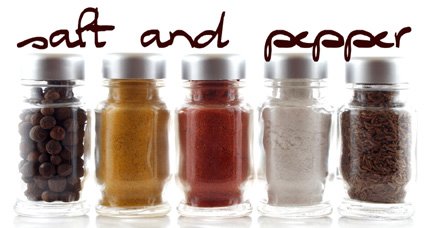"So, what are you trying to tell me?" I ask. "No more meat?"
This possibility isn't much of an issue for me as I was vegetarian and pescatarian (fish only) for about eight years, but the Boy...the Boy is a meat-and-potatoes kind of guy; I was pretty shocked (and delighted) at what this could mean for my mostly ineffective attempts to open his eyes to the delicious world of plants. Getting five-a-day in him has always been a struggle.
I see bacon cheeseburgers flash before his eyes, and he hedges, "Weeell, more like significantly reduce, but yeah."
Since, I've been expanding my repertoire of meat-free dishes for the meat lover. The Boy, on the other hand, keeps mentioning that he wants to find a local farm where he can kill his own chicken. Kind of a gruesome twist on picking your own apples, I guess. As long as he dresses and plucks the thing too, more power to him.
Anyway, on to the point of this post: the Mushy Goo. I got turned on to an Orangette recipe by a friend last week that sounded interesting so I thought I would try something like it. What I made is a modified, slimmer version of this recipe, if you're interested in the original. It calls for chard, not kale, and more oil and cheese.
My version was delicious, and the bread comes out tasting exactly like saltines crushed into soup, one of my all-time top comfort foods.
Kale, Onion, and Gruyère Panade
Makes about 5 main-dish servings and takes about 2.5 hours start-to-finish.
1 1/2 lbs. onions, thinly sliced
About 1/4 c. olive oil
6 cloves garlic, slivered
Salt and pepper
1 lb. dinosaur kale, thick ribs removed, ripped into manageable bits
Water (2 c. plus enough to drizzle on the kale)
10 ounces day-old yummy bread (i.e. not WonderBread), cut into rough 1-inch cubes
2 c. vegetable broth
1 c. of grated gruyère cheese
To prepare the onions:
Place the onions in a large, deep saucepan, and toss with about 1/8 cup olive oil. Cook on medium-high heat, shaking the pan occasionally, until the onions on the bottom start to turn golden on the edges, about 3 minutes. Stir and cook until all the onions start to color. Reduce the heat to low, and add the garlic, about 1 t. of salt and pepper to taste. Let cook, stirring occasionally, until the onions are golden and tender, another 20 minutes or so.
Preheat the oven to 325.
To prepare the greens:
Place handfuls of kale in a large nonstick skillet sprayed with olive oil, mist greens with olive oil, and sprinkle with water and a few pinches of salt and pepper. Set the pan over medium heat until the leaves begin to cook; then reduce the heat and stir and fold the leaves until they are all just wilted, 2-4 minutes. Set aside.
To prepare the bread:
Toss the cubed bread with 2 or 3 T. olive oil, ¼ cup of the broth, and several pinches of salt.
To build the panade:
Using an oven-proof and stovetop-safe casserole dish or dutch oven (I used the 3 quart stainless casserole that I use for almost everything), assemble the panade in layers. It's all going to get mixed up, so it doesn't have to be pretty or exact. You should end up with 2 or 3 layers of each ingredient, so each layer should be 1/3 to 1/2 of the total amount you've got. You'll want the top to have a little of each ingredient showing. Start with onions, followed by bread cubes, greens and cheese. Lather, rinse, repeat until you have no more ingredients or no more space in your dish (mine was full to the top). It's okay to pack it down at the end.
Bring the remaining 1 ¾ cups broth and 2 cups water to a simmer in a pan of your choice. Orangette used a medium saucepan, I used the skillet I wilted the greens in to cut down on dishes. Whatever works for you. Pour the warm liquid slowly, in doses, over the assembled panade, drizzling it down the sides of the dish so you don't lose all the cheese on the top into the casserole.
Set the dish over medium heat on the stovetop, and bring the liquid to a simmer. Cover the top of the dish with parchment paper, then loosely cover the top again with aluminum foil or the lid to the dish if it's not too full. Place the panade on a baking sheet to catch drips, slide it into the oven, and bake it until hot and bubbly, about 1 hour.
Uncover, raise the temperature to 375, and bake for 10-20 minutes to brown the top. Once out of the oven, give it a couple of minutes to calm down before serving. Enjoy!
Several reports indicate that it is also delightful when reheated.
We served it with an earthy, fruity Carmenere/Merlot blend, courtesy of Trader Joe's Chilean Collection ($4.49), and it was a wonderful meal.

No comments:
Post a Comment